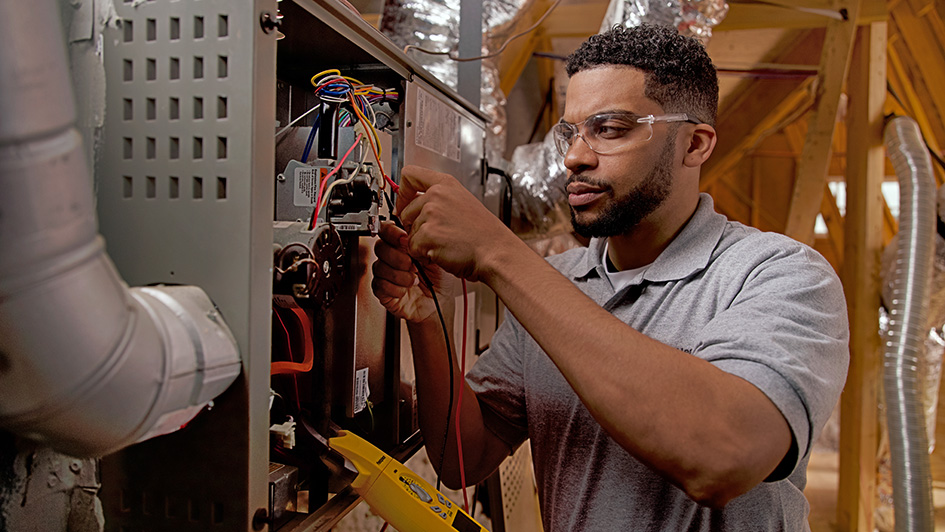
A furnace is almost always a background player for your home, ensuring you're warm during the cold winter months. It frequently doesn’t get noticed until a malfunction appears.
One source might be that your furnace has a cracked heat exchanger. It’s a potentially dangerous issue, so it’s critical to learn the evidence of a cracked heat exchanger and what you should do if you believe that might be the problem.
What Is a Heat Exchanger in a Furnace?
A heat exchanger helps transition heat from the combustion chamber of your furnace to the air that moves throughout the ventilation. It typically accomplishes this through coils or tubes that heat up the air while functioning as a barrier to keep the gasses created in the combustion chamber, called flue gasses, from leaking out into your home.
Is a Cracked Heat Exchanger Dangerous?
Thanks to its central role, it shouldn't come as a surprise that a damaged heat exchanger can be very dangerous. Cracks in the heat exchanger can permit dangerous gasses – like carbon monoxide, which can be lethal – to circulate through your home.
For this reason, do NOT run your furnace if you think you're dealing with a cracked heat exchanger, as letting it run could make the whole household ill. Call an HVAC professional immediately if you are worried your heater has a cracked heat exchanger that needs repair.
Four Warning Signs of a Cracked Heat Exchanger:
- Furnace turns off: A cracked heat exchanger could cause your furnace to turn off.
- Unusual Smells: If the air escaping your furnace has a powerful chemical scent, it may be a sign gasses are slipping through cracks in your heat exchanger. These byproducts, which may smell like formaldehyde, are a common warning sign.
- Carbon monoxide alarm goes off or you notice health problems: If a cracked heat exchanger is emitting carbon monoxide into your home, your carbon monoxide alarm should go off or family members might start experiencing signs of carbon monoxide poisoning. Side effects include headaches, dizziness, weakness, nausea, vomiting or feeling tired. If your alarm goes off or you feel sick, exit the home as soon as you can and then call for help.
- Soot: If you see black sooty collecting around the exterior of your furnace, it’s an indication something could be seriously wrong.
What to Do if a Furnace Heat Exchanger is Cracked
If you suspect your furnace has a cracked heat exchanger, call a professional well versed in furnace installation Mobile right away so they can inspect your system and, if necessary, handle a furnace heat exchanger replacement. Costs should vary depending on the situation, but estimates can roughly suggest $1,000 to $3,000.
Fortunately, the good news is that heat exchangers are regularly covered by the warranty. You should review the warranty paperwork on your furnace, since while the warranty won't always cover the entire cost of repairs, it can significantly reduce your bill.
How to Prevent a Cracked Heat Exchanger in Your Home
One of the best ways to avoid problems in your furnace overall is through routine furnace maintenance. Furnaces work the best when they operate efficiently. Hiring a skilled professional to inspect your furnace for worn-out parts, clogged filters and other likely problems can help you avoid getting a big bill later on.
It’s also a good idea to take a look at your furnace filters every few months – it’s recommended some filters be changed every 90 days or sooner if they are dirty or grimy. While the filters are not part of the heat exchanger itself, the strain of pulling air through a clogged filter makes your entire furnace work longer to do its job. And the harder your furnace needs to run, the more deterioration parts like the heat exchanger will experience.
